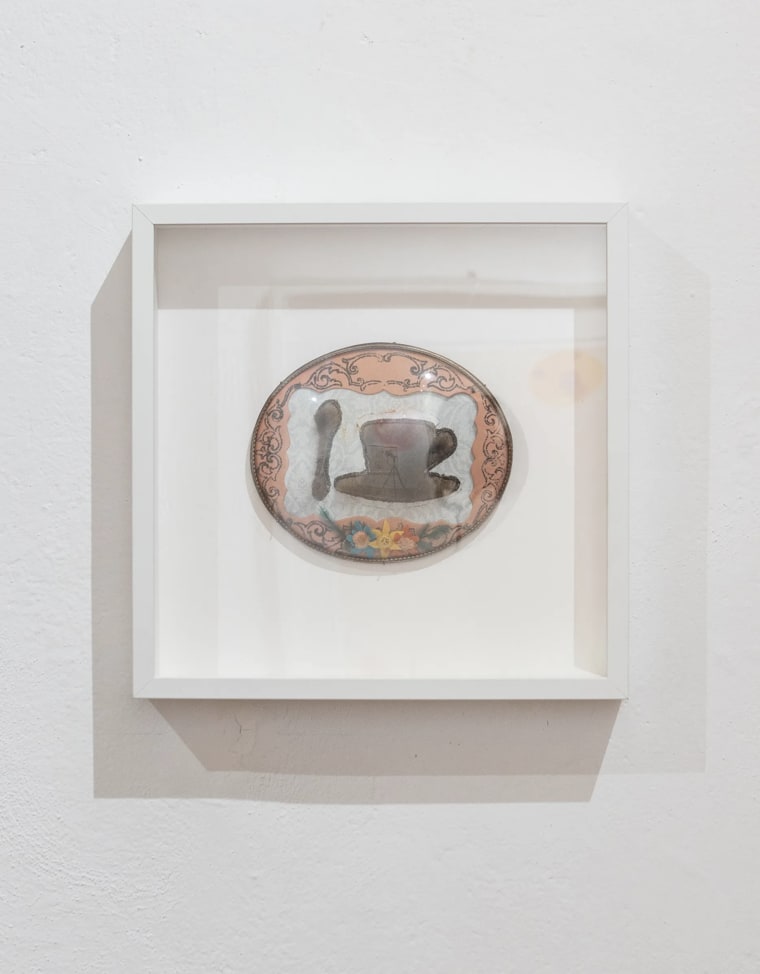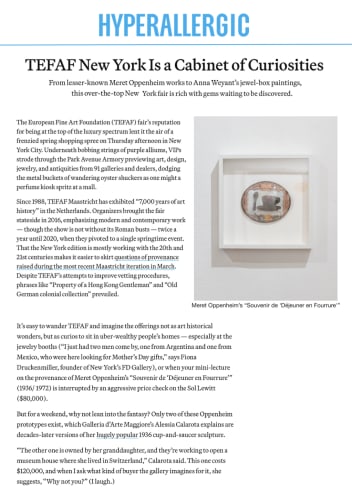The European Fine Art Foundation (TEFAF) fair's reputation for being at the top of the luxury spectrum lent it the air of a frenzied spring shopping spree on Thursday afternoon in New York City. Underneath bobbing strings of purple alliums, VIPs strode through the Park Avenue Armory previewing art, design, jewelry, and antiquities from 91 galleries and dealers, dodging the metal buckets of wandering oyster shuckers as one might a perfume kiosk spritz at a mall.
Since 1988, TEFAF Maastricht has exhibited "7,000 years of art history" in the Netherlands. Organizers brought the fair stateside in 2016, emphasizing modern and contemporary work - though the show is not without its Roman busts - twice a year until 2020, when they pivoted to a single springtime event. That the New York edition is mostly working with the 20th and 21st centuries makes it easier to skirt questions of provenance raised during the most recent Maastricht iteration in March.

It's easy to wander TEFAF and imagine the offerings not as art historical wonders, but as curios to sit in uber-wealthy people's homes - especially at the jewelry booths ("I just had two men come by, one from Argentina and one from Mexico, who were here looking for Mother's Day gifts," says Fiona Druckenmiller, founder of New York's FD Gallery), or when your mini-lecture on the provenance of Meret Oppenheim's "Souvenir de 'Déjeuner en Fourrure'"(1936/ 1972) is interrupted by an aggressive price check on the Sol Lewitt ($80,000).
But for a weekend, why not lean into the fantasy? Only two of these Oppenheim prototypes exist, which Galleria d'Arte Maggiore's Alessia Calarota explains are decades-later versions of her hugely popular 1936 cup-and-saucer sculpture.
"The other one is owned by her granddaughter, and they're working to open a museum house where she lived in Switzerland," Calarota said. This one costs $120,000, and when I ask what kind of buyer the gallery imagines for it, she suggests, "Why not you?" (I laugh.)
[...]
